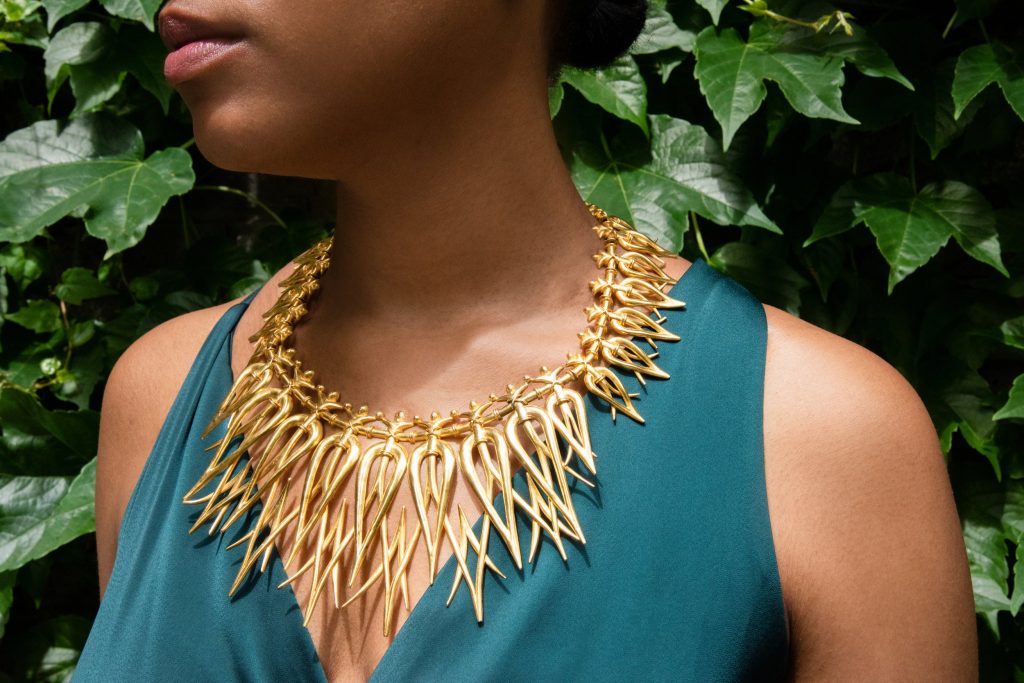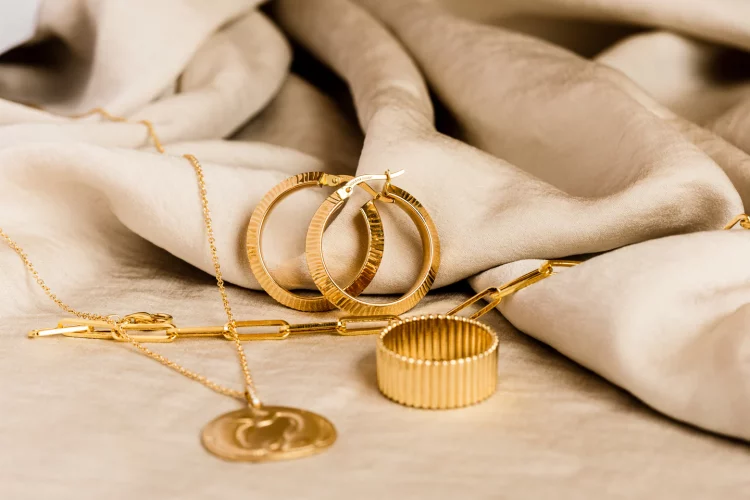How to Invest in Rare and Collectible Gold Jewelry Pieces
Gold jewelry has long been a symbol of wealth, elegance, and timeless beauty. However, for investors looking to grow their portfolios in unique and valuable ways, rare gold jewelry offers an attractive opportunity. Unlike more common gold jewelry, rare pieces come with distinct advantages that make them highly desirable as long-term investments.
Investing in rare gold jewelry requires a specific approach, as these pieces are not just valuable because of their gold content. Rare gold jewelry often boasts exceptional craftsmanship, historical significance, or limited production, making it both a tangible asset and a collector’s item. Here are some important tips and strategies for investing in rare and collectible gold jewelry:
1. Understand the Different Types of Rare Gold Jewelry
To start investing in rare gold jewelry, it’s crucial to understand the different types of pieces that qualify as rare or collectible. These may include:
- Vintage and Antique Jewelry: Pieces that are decades or even centuries old can be highly collectible. Vintage jewelry, especially those crafted by well-known designers or specific time periods, often gains value over time.
- Designer Jewelry: High-end pieces from renowned designers or luxury brands such as Cartier, Van Cleef & Arpels, and Tiffany & Co. can be particularly valuable, as they are often associated with craftsmanship and exclusivity.
- Limited-Edition and One-of-a-Kind Pieces: Some jewelry designers create limited-edition collections or unique pieces, which can drive up their value. These pieces are highly sought after by collectors who value exclusivity.
- Historical Jewelry: Jewelry that has historical significance, such as pieces owned by royalty, celebrities, or tied to important events, holds a special appeal. These items tend to appreciate significantly over time.
When considering an investment in rare gold jewelry, focus on pieces with a strong provenance—documentation or history that proves the jewelry’s uniqueness and authenticity. Provenance can greatly enhance the value of the item, especially when it comes to rare collectibles.
2. Evaluate the Craftsmanship and Design
The craftsmanship of the piece plays a significant role in its investment value. High-quality craftsmanship adds to the desirability of the jewelry. Some rare gold jewelry pieces may have intricate designs that cannot be replicated easily, and the more skilled the artisan, the more valuable the piece becomes. Additionally, unique or avant-garde designs often increase demand and value in the collector’s market.
As you assess pieces for investment, ask yourself these questions:
- Is the jewelry made with high-quality materials? For example, gold purity and the quality of gemstones embedded in the piece are key.
- Does the piece display exceptional craftsmanship? Handcrafted pieces often attract more interest from collectors.
- Is the design timeless or representative of a specific art movement or period? Jewelry from certain eras or with a distinct design influence can become highly sought after.
3. Research the Brand or Designer Behind the Jewelry
Investing in rare gold jewelry often involves seeking out pieces by prestigious designers or reputable jewelry houses. Well-known brands, especially those with a long history of high-quality production, often see their pieces appreciate in value over time.
Look for designer signatures, stamps, or hallmark marks on the jewelry. These can verify authenticity and help establish the piece’s value. The market for rare designer jewelry is robust because of the brand’s reputation, and collectors often seek out pieces from the most respected names in the industry.
Some brands, like Cartier, Bulgari, and Chopard, are renowned for their craftsmanship and design, and their pieces tend to maintain or increase in value. Other designers, such as David Yurman or Fabergé, may produce highly collectible items that can offer great returns on investment.
4. Pay Attention to Rarity and Exclusivity
Rarity is one of the most important factors that drives the value of gold jewelry. This is particularly true for limited-edition pieces, jewelry that was part of an exclusive collection, or pieces that are no longer in production. Exclusivity drives demand, and collectors are often willing to pay a premium for a piece that is difficult to find.
Look for rare gold jewelry items with:
- Limited runs or special edition collections.
- Unique designs or craftsmanship.
- Pieces associated with famous people or important events.
As the supply of these items is constrained, the demand often increases, leading to higher prices over time.
Market Trends for Rare Gold Jewelry and Their Investment Potential
The market for rare gold jewelry is driven by a range of factors, including economic conditions, consumer demand, and cultural preferences. Over the years, gold jewelry has proven to be a resilient investment, as the price of gold tends to rise during times of economic uncertainty. However, rare gold jewelry offers additional layers of investment potential, as its value is influenced not just by the price of gold but also by collector demand, brand reputation, and historical significance.
1. Economic Conditions and Gold Prices
Economic uncertainty is one of the primary drivers of gold’s appeal as an investment. When economies face instability, such as during recessions or geopolitical tensions, the demand for gold tends to rise. As gold prices increase, the value of rare gold jewelry often follows suit. However, gold jewelry may experience additional appreciation due to its unique design, craftsmanship, or historical context.
The key to making a sound investment in rare gold jewelry is timing. During periods of economic downturns, gold jewelry—especially rare or designer pieces—becomes more valuable. Investors can take advantage of this by purchasing pieces during times of low supply or when economic conditions create uncertainty in the market.

2. Trends in Collectibles and Luxury Goods
Over the years, there has been an increasing demand for luxury and collectible items, including rare gold jewelry. As more people look to diversify their investments, there has been growing interest in unique, high-value pieces. Additionally, the rise of online marketplaces and auction houses has made rare gold jewelry more accessible to global buyers, which further boosts demand.
Another important trend to watch is the shift towards sustainable and ethically sourced gold. Many collectors and investors are now prioritizing pieces made with responsibly sourced materials, which can influence both the desirability and value of rare gold jewelry.
3. The Role of Social Media and Celebrity Influence
In the digital age, social media plays an important role in driving trends and demand for rare jewelry. Celebrities, influencers, and high-profile individuals often showcase their rare jewelry collections, and these public displays can create substantial demand for similar pieces. When a celebrity or prominent figure is seen wearing a specific piece of jewelry, its value can soar.
Social media platforms, like Instagram and Pinterest, also allow collectors to share their collections and get more exposure, which in turn can drive up prices for rare gold jewelry. Thus, being aware of celebrity trends and social media influence can provide insights into which jewelry pieces may become highly sought after in the future.
Evaluating the Appreciation Potential of High-End Gold Jewelry Investments
When evaluating the investment potential of rare gold jewelry, there are several factors to consider that will determine whether the piece will appreciate over time.
1. Provenance and Documentation
As with any collectible investment, the provenance—or history—of the piece plays a critical role in its value. Jewelry with a clear, documented history of ownership or connection to an important event or person will generally appreciate more than an identical piece without any notable history. Always look for certificates of authenticity, auction records, and any other documents that can confirm the item’s provenance.
2. Market Demand and Collector Interest
Understanding the market demand for rare gold jewelry is essential for determining its appreciation potential. Pieces that are in high demand among collectors or jewelry connoisseurs are more likely to appreciate over time. Researching market trends and staying informed about the popularity of certain designs, designers, or historical periods will help you make informed decisions about your investment.
3. Condition and Maintenance
The condition of the jewelry is paramount in determining its value. Pieces that have been well-maintained, with no signs of damage or wear, will typically appreciate more than those that have been poorly cared for. Proper storage and maintenance are critical when investing in rare gold jewelry. Consider having pieces professionally cleaned and inspected regularly to ensure they remain in top condition.
4. Timeless Appeal
While certain styles or trends may go in and out of fashion, timeless designs—such as classic gold chains, simple rings, or iconic vintage pieces—tend to hold their value better than pieces that are tied to fleeting trends. Investing in pieces with a timeless, enduring appeal ensures that they will maintain their market value for years to come.
Conclusion
Investing in rare gold jewelry offers a unique opportunity to combine the beauty and elegance of fine craftsmanship with the potential for significant financial returns. By understanding the intricacies of rare jewelry, staying informed about market trends, and evaluating the appreciation potential of high-end pieces, investors can build a portfolio of valuable, collectible items. Whether for personal enjoyment or as a long-term investment, rare gold jewelry can be a rewarding asset that enhances both your collection and your financial future.



































